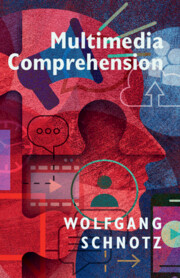Book contents
- Multimedia Comprehension
- Multimedia Comprehension
- Copyright page
- Dedication
- Contents
- Preface
- Chapter 1 Introduction
- Chapter 2 A Short History of Multimedia Sign Systems
- Chapter 3 Basic Forms of Representations
- Chapter 4 Comprehension of Text
- Chapter 5 Comprehension of Pictures
- Chapter 6 Integrative Comprehension of Texts and Pictures
- Chapter 7 Quasi-symbiotic Relations between Text and Picture Comprehension
- Chapter 8 Beyond Comprehension
- Chapter 9 Practical Implications
- Concluding Remarks
- References
- Index
Chapter 2 - A Short History of Multimedia Sign Systems
Published online by Cambridge University Press: 16 February 2023
- Multimedia Comprehension
- Multimedia Comprehension
- Copyright page
- Dedication
- Contents
- Preface
- Chapter 1 Introduction
- Chapter 2 A Short History of Multimedia Sign Systems
- Chapter 3 Basic Forms of Representations
- Chapter 4 Comprehension of Text
- Chapter 5 Comprehension of Pictures
- Chapter 6 Integrative Comprehension of Texts and Pictures
- Chapter 7 Quasi-symbiotic Relations between Text and Picture Comprehension
- Chapter 8 Beyond Comprehension
- Chapter 9 Practical Implications
- Concluding Remarks
- References
- Index
Summary
Human history has created a large variety of sign systems for communication. These systems were developed at different times for different purposes. While oral language has developed as part of human biological evolution, written texts, realistic pictures, maps, and graphs are cultural inventions. Human oral language might have originated from gestures supplemented by sound patterns. It is a biological anchored feature of the human species, as manifested in somatic, perceptual, and neurological pre-adaptations. Early writing systems used iconic ideograms which were gradually transformed into symbols. This made production and discrimination easier but increased the required amount of learning. Further development led to writing systems using phonograms plus orthographic ideograms. Realistic pictures are older than writing systems. They represent content by similarity but also show allegories of social relationships. Maps are realistic pictures of a geographic area facing the problem of how to present a curved earth surface on a two-dimensional surface. Graphs are visuo-spatial objects representing a subject matter based on analogy due to inherent common structural properties.
- Type
- Chapter
- Information
- Multimedia Comprehension , pp. 13 - 38Publisher: Cambridge University PressPrint publication year: 2023

